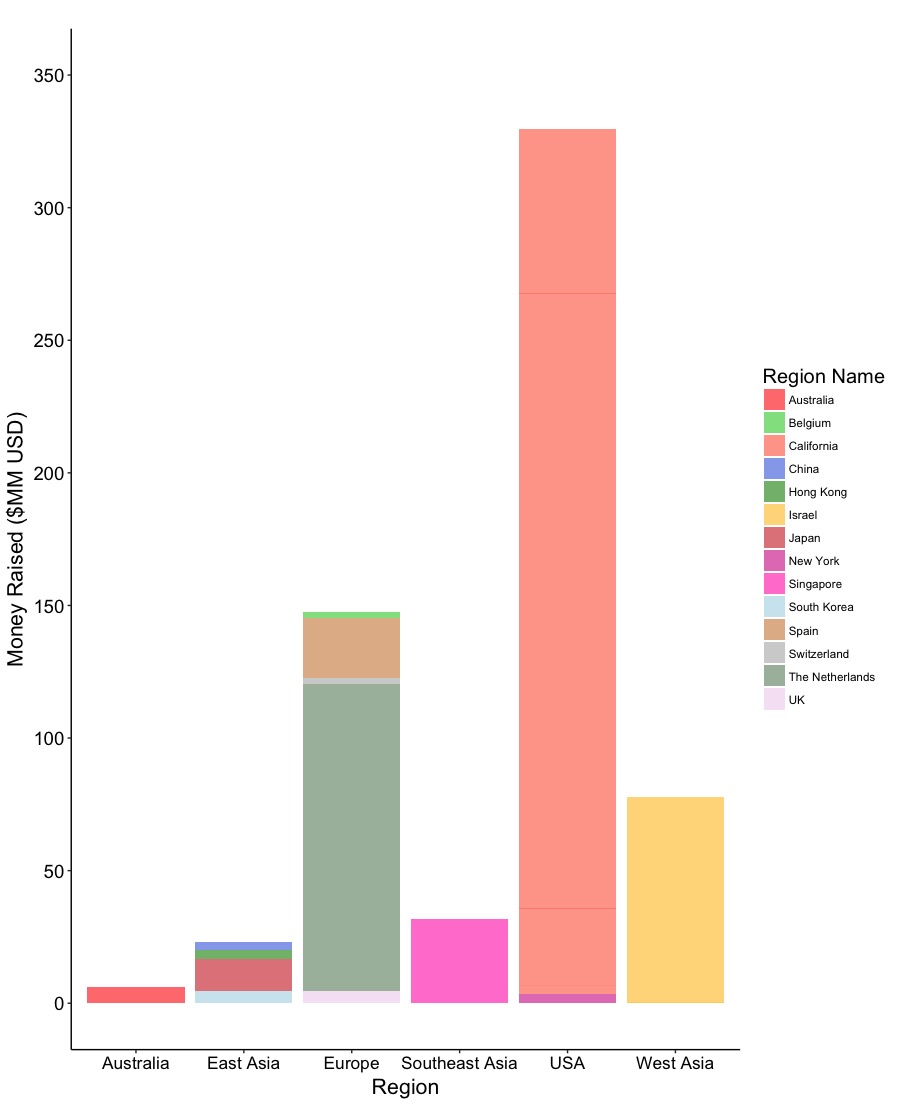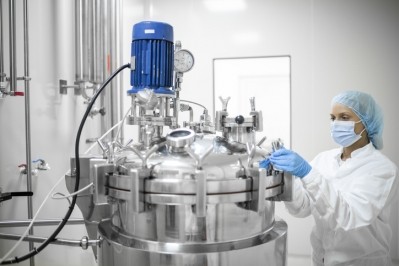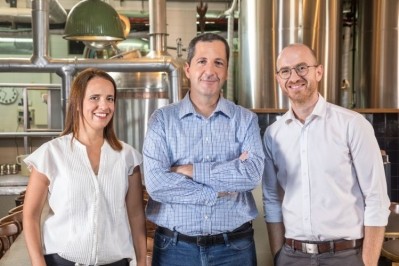When will cell-cultured meat reach price parity with conventional meat?

The studies make clear that achieving costs below $7 per kg will require higher-density cell cultures, more efficient use of food-grade media, food-grade equipment in facilities, significant but attainable cost reductions in recombinant protein and growth factor production, and more “relaxed” payback time criteria for capital expenditures, says the Good Food Institute (GFI), which commissioned the studies along with Belgian animal rights advocacy group GAIA.
The two studies - a techno-economic assessment (TEA) and a life cycle assessment (LCA) - model the costs and environmental impacts of a hypothetical commercial-scale cell-cultured meat facility churning out 10,000 metric tons of ground meat a year at a temperature of around 37°C (98.6°F) in 2030.
The ‘meat’ in question would be a “slurry or paste made out of meat cells, comparable to very finely ground meat, suitable for further formulation into meat-consumer products” as opposed to a next-generation more structured, steak-like product, explain the authors at CE Delft, noting that cells from water-based species can be grown at lower temperatures (15-30°C), saving some heating costs.
The economics of cell-cultured meat production
“Basic thermodynamics” dictate that growing meat from cells in bioreactors instead of living, breathing, animals should be more efficient, as resources “are spent on growing only the cells that make up the meat product rather than maintaining the day-to-day activities of an entire animal’s body,” noted GFI senior scientist Elliot Swartz, in an analysis of the studies you can read HERE.
However, there are many known unknowns (and likely some unknown unknowns too) when it comes to producing cell-cultured meat on an industrial scale, added Swartz, noting for example, “to our knowledge, the large-volume perfusion bioreactor systems as described in the LCA and TEA do not yet exist.”
Future work should therefore be focused on optimizing existing systems or “developing new systems that can efficiently expand or differentiate skeletal muscle and adipose tissue or support co-cultures of multiple cell types,” he said.
“Conceptually, this could require embedding scaffolding structures within a bioreactor or using permeable biomaterials to house encapsulated cells in spheres, sheets, or tubes. Further development of fit-for-purpose perfusion bioreactors for cultivated meat production offers a large whitespace opportunity for new companies.”
‘Reducing the costs of growth factors has a substantial impact on cultivated meat’
CE Delft looked at capital costs, maintenance, cleaning, labor, wastewater treatment; heat, electricity, culture medium costs and other inputs such as chemicals, filters, scaffolds, vials and ultrapure water; coupled with cell bank maintenance, small-scale proliferation, large-scale proliferation, differentiation and maturation, and harvesting and food safety measures.
The authors acknowledge that every firm uses a different cell culture medium, a combination of water, amino acids, sugars, salts, vitamins, recombinant proteins and growth factors – signaling proteins that encourage cells to proliferate and differentiate, which come with a hefty price tag. For the purposes of this study, it selects albumin, insulin, and transferrin and FGF-2 and TGF-β.
“Reducing the costs of growth factors [such as FGF-2] has a substantial impact on cultivated meat costs, and limiting the use of recombinant proteins [such as albumin] together with reducing the production price seems even more vital to bring cultivated meat production costs down.”
But they added: “Prices are falling rapidly already, which is promising for the future.”
Maximizing cell density during the proliferation stages will also be key to reducing costs, said CE Delft, which estimates that by 2030, a hypothetical cell-cultured meat facility might be able to compete with some conventional meats on cost, with production costs (as opposed to wholesale or retail prices) as low as $5.66/kg or $2.57 per pound, with hybrid meats combining plant-based and cell-cultured meats providing a near-term opportunity to further reduce costs and improve texture.
GFI: ‘The findings should not be taken as unchanging truths’
The studies did not, however, factor in specialized and automated cultivators for meat production, cell culture media recycling, or improved methods for growth factor production, which could make a significant difference to the economic equation, noted Swartz at the GFI.
“The findings should not be taken as unchanging truths or as the absolute lower bounds of costs and environmental impacts of cultivated meat.”
For example, he said, perhaps recombinant proteins or growth factors can be produced in less resource-intensive hosts, or manufacturers could work out how to do more with less by “engineering more potent or thermostable variants, developing encapsulated or slow-release systems, using conditioned medium from other animal cell lines, relying on high-density cell cultures to become self-sustaining, or by discovering biofunctional equivalents in plants or other organisms.
“Serum- and albumin-free medium formulations are commonplace for the culturing of pluripotent stem cells, which increases confidence that albumin may be able to be eliminated entirely from use in cultivated meat manufacturing.”
The environmental impact of cell-cultured meat production
So what about sustainability?
The environmental impact of cell-cultured meat is largely driven by energy use; primarily electricity use during production itself, but also electricity and heat use in upstream production of medium, according to CE Delft’s LCA report: “We therefore see that electricity use is the most important driver for the environmental single score impact of cultivated meat in a conventional energy scenario.”
If renewable energy is used to power cell-cultured meat production, this could reduce global warming impacts by 17%, 52%, and 85-92%; and land use by 63%, 72%, and up to 95% vs conventional chicken, pork, and beef production, respectively, “even when compared to an extremely optimistic scenario projecting reduced environmental impacts of conventional animal agriculture, including renewable energy at farm and feed operations,” said Swartz at the GFI.
“These conclusions are expected to be highly robust, as the study also accounts for uncertainty in cultivated meat production by conservatively assuming high energy use at the facility, which is representative of an upper estimate.”
Other positive benefits of cell-cultured meat production beyond GHG emissions, land, water use
If land currently used for conventional meat production (mostly for feed) is “carefully repurposed to rebuild ecosystems and sequester carbon or simply grow more human-edible food,” added Swartz, “we can significantly offset carbon emissions, and address global food security challenges.”
Consistent with previous studies, said Swartz, cultivated meat is also expected to be less polluting than all forms of conventional meat and use significantly less blue water (found in surface and groundwater reservoirs) than conventional beef production (but about the same as chicken and pork).
It could also bring other positive benefits, “including mitigation of antibiotic resistance, foodborne illness, and zoonotic disease risk associated with conventional animal agriculture, restoration of terrestrial and marine habitats, and a decreased rate of biodiversity loss.”
The overall environmental score for cell-cultured meat, however, is still higher than plant-based meat, according to CE Delft.
- Click HERE to read about one company on a mission to reduce the cost of growth factors for cell cultured meat production.
*Read the corrigendum HERE. According to the GFI, "There was an error in the original report which was pointed out to CE Delft by an external reviewer in August and the team has just issued a corrigendum.
"In brief, the compounding scenarios analyzed in the study — higher cell densities and larger cell volumes — result in bioreactor volume being essentially completely full of cells, which is something that wouldn't physically permit their growth. To correct this error, the CE Delft team removed the higher cell density scenario and re-analyzed the data. Additionally, we asked the CE Delft team to re-analyze the data using a food-grade amino acid mix and include additional details about the assumptions made for the food-grade cultivated meat facility modeled in the report.
"The changes cumulatively increase the low-end modeled production cost by ~13%, from $5.66 per kilogram to $6.43 per kilogram, but do not affect the qualitative conclusions from the report."
**The 16 companies were: Cultivated meat research institute (Avian), Aleph Farms (cell cultured beef), Avant Meats (cell cultured fish), Mosa Meat (cell cultured beef), Shiok Meats (cell cultured crustaceans), SuperMeat (cell cultured poultry), Wild Type (cell cultured fish), Akron Biotech (recombinant proteins, scaffolds, cell banking systems), Black & Veatch (consulting engineering and design-build services), Buhler (extrusion and feed pre-mix), Cell-trainer Biotech (consulting engineering), Evides (water production and treatment), Merck (cell culture media and other process related products), OSPIN (bioreactors and tissue chambers for cell expansion and differentiation), Richcore (recombinant proteins), and Warner Advisors (consulting engineering).


















